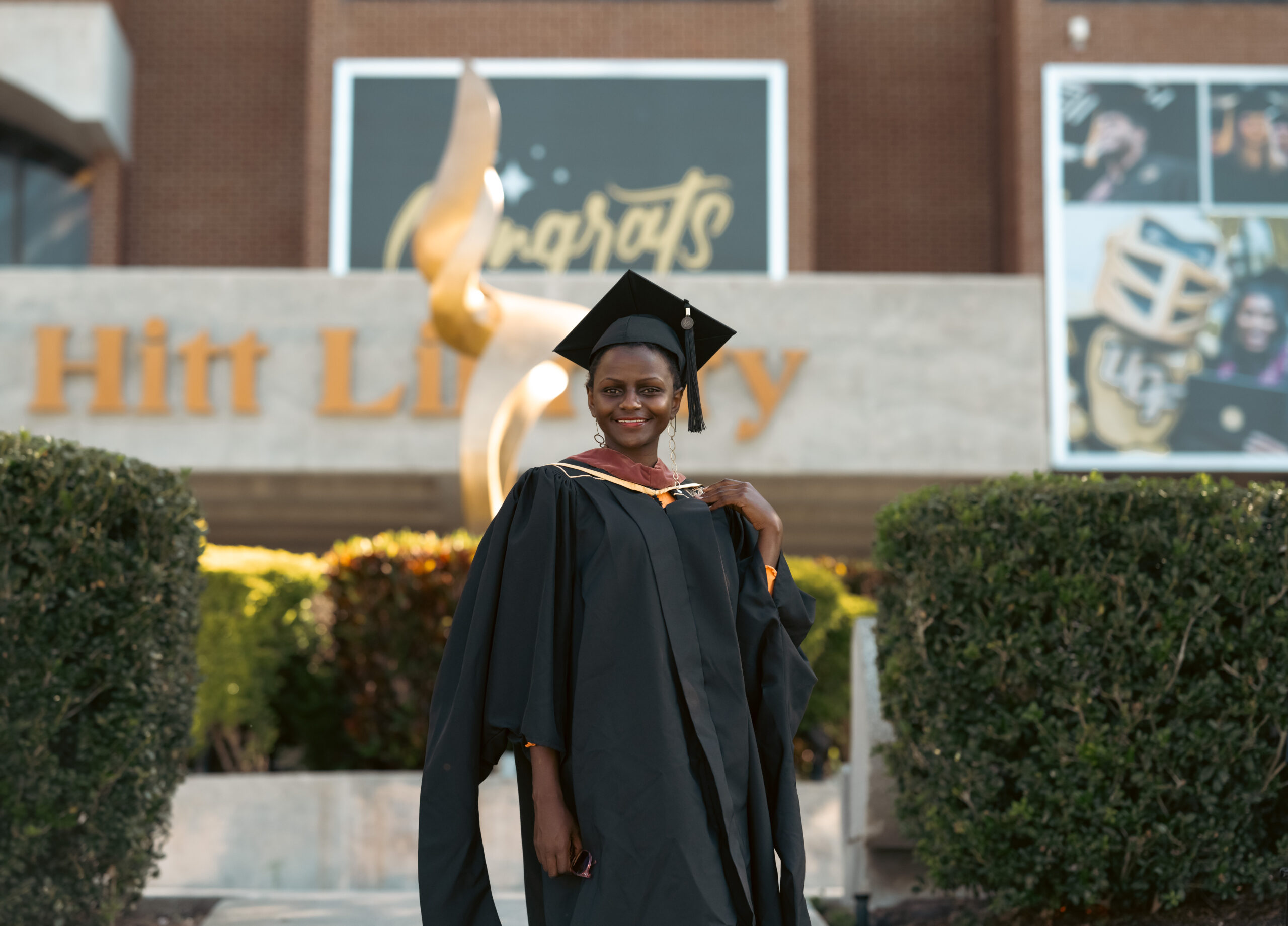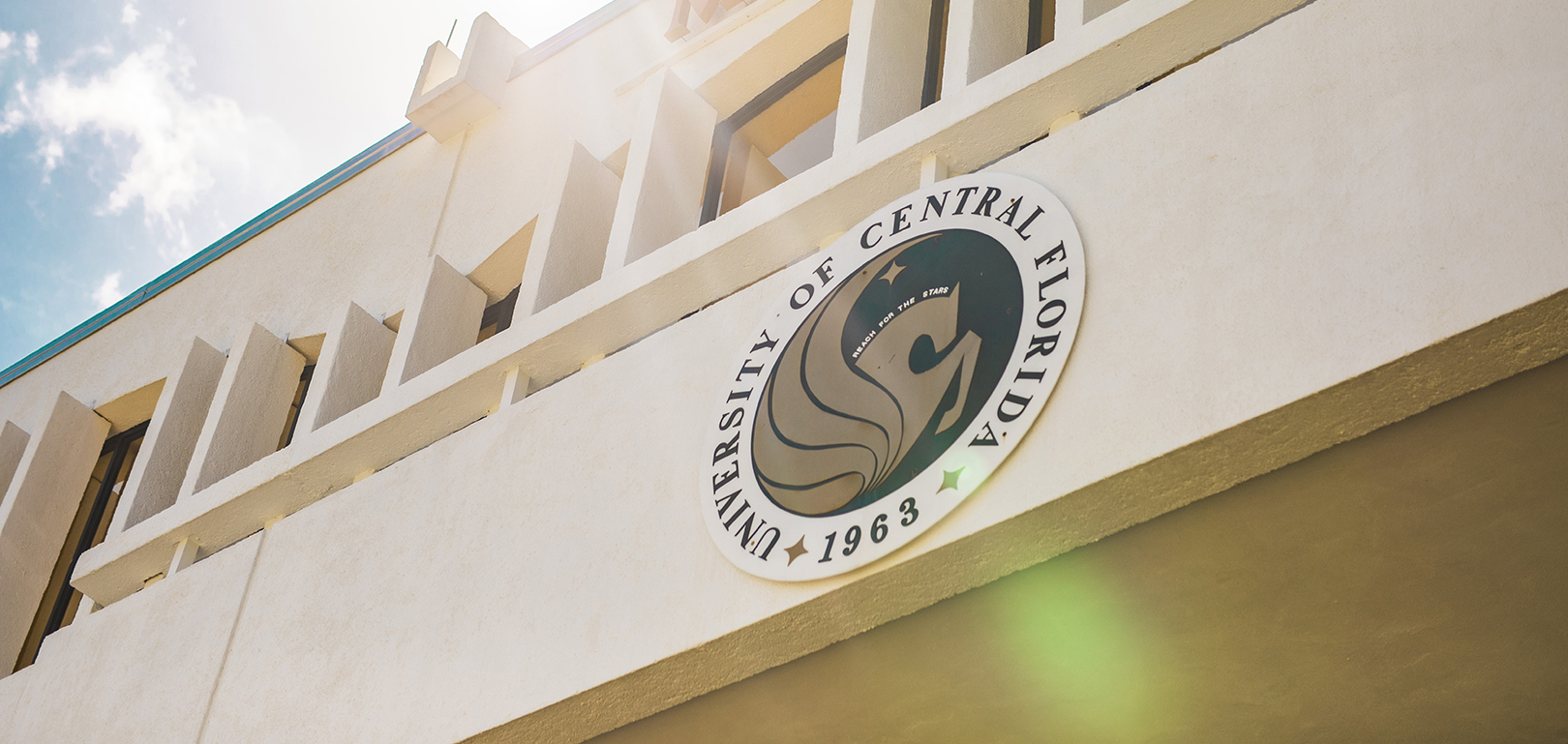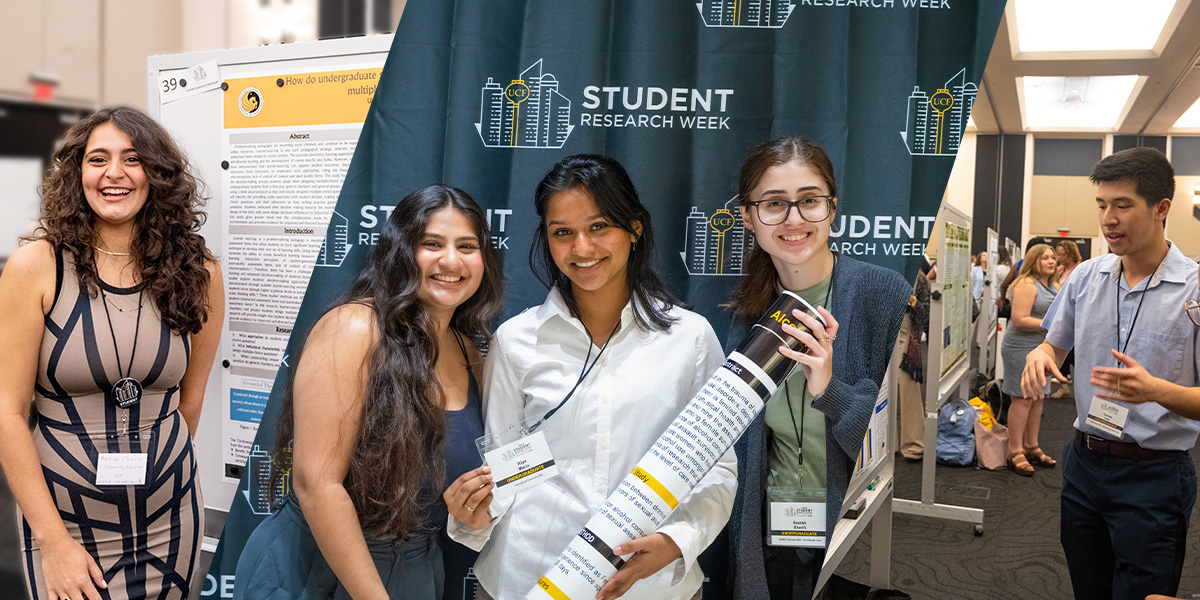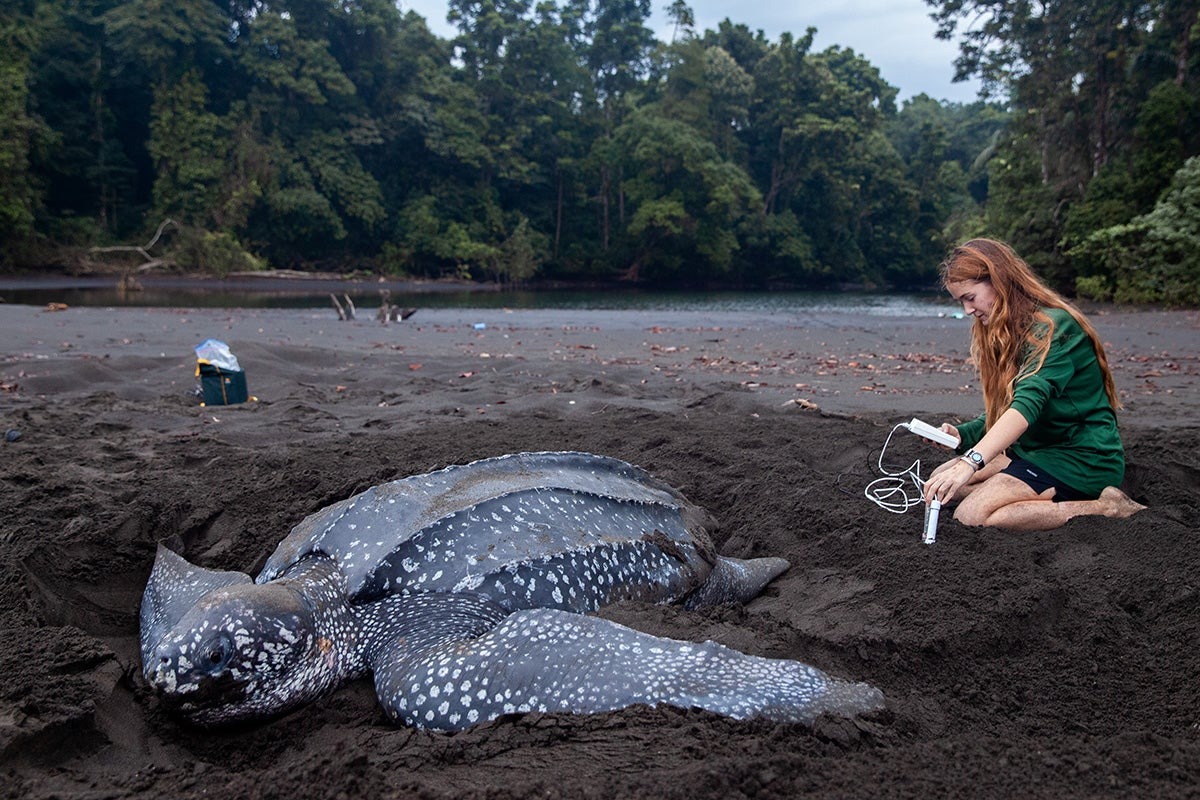A New Dimension to Space Science at UCF
The largest fully operational radio telescope on the planet – the Arecibo Observatory in Puerto Rico – will soon be under new management.
A consortium led by the University of Central Florida will start formal transition activities to take on the management of the National Science Foundation’s Observatory. NSF is negotiating the operations and management award with UCF.
With its partners, Universidad Metropolitana in San Juan and Yang Enterprises, Inc. in Oviedo, the team plans to expand the capabilities of the telescope, which has made significant contributions to science. The 18-acre reflector also was featured in the James Bond movie GoldenEye.
“The observatory will provide a valuable new dimension to space science at UCF while creating more academic opportunities for students and faculty at UCF, in Puerto Rico and beyond. Our lead role with the observatory deepens Central Florida’s strong ties with our fellow citizens on the island. This agreement, made possible through partnerships, also ensures that the observatory will continue to make significant contributions to space science and mankind.”
The agreement is valued at $20.15 million, subject to the availability of funds, over five years and is scheduled to begin April 1.
“This is a win-win-win,” said U.S. Sen. Bill Nelson, D-Fla., who supported UCF’s bid to manage Arecibo and recently helped secure funding in Congress to repair damage to the telescope caused by Hurricane Maria. “It’s good for UCF and Florida, it’s good for Puerto Rico, and it will enable thousands of scientists who do research at Arecibo each year to continue their work.”

Located in Puerto Rico, the Arecibo Observatory is the most powerful single-dish radio
telescope in the world. (Image courtesy of Arecibo Observatory, a facility of the NSF)
The new agreement means the Arecibo Observatory will continue to offer scientists from around the world an opportunity to pursue radio astronomy, atmospheric science and planetary radar research. The consortium, calling itself Arecibo Observatory Management Team, also ensures that the observatory will continue to track potentially dangerous near-Earth objects.
“Universidad Metropolitana is proud to be a partner in this new project for the Arecibo Observatory,” said Chancellor Carlos M. Padin, who oversees the nonprofit institution of higher learning that is part of the Ana G. Méndez University System. “We are confident this partnership will expand the opportunities for research, as well as formal and informal STEM [science, technology, engineering and mathematics] education in Puerto Rico.”
For Yang Enterprises, Inc., the partnership has special significance. Tyng-Lin (Tim) Yang, founder and executive vice president, earned his Ph.D. in civil engineering at UCF in 1990. He also serves as an adjunct professor in the Civil Engineering Department and on the Dean’s Advisory Board for the UCF College of Engineering Computer Science. He and president and CEO, Li-Woan Yang, built the company to a multimillion-dollar enterprise.
“This project presents a unique opportunity for Yang Enterprises to support not only space research, but also support the Arecibo community and the educational and scientific communities of the globe,” Tyng-Lin (Tim) Yang said.
Yang Enterprises, Inc. provides architecture and engineering, operations and maintenance, and logistical services for mission-critical systems for multiple NASA centers, the Air Force and several Fortune 500 companies. The group will be responsible for facilities infrastructure, engineering, operations, maintenance, information technology and support services, as well as logistics and security services. Yang Enterprises, Inc. will introduce new technologies and cutting-edge tools to support Arecibo’s requirements and modernize operations.

The observatory’s radar system gathers information about planets, moons, asteroids and comets.
(Image courtesy of Arecibo Observatory, a facility of the NSF)
Arecibo’s History and Significance
Built in the 1960s, the observatory continues to make significant contributions to understanding the universe. Scientists from around the world have used the telescope.Today, pulsars are being used to search directly for gravitational waves through incredibly accurate timing with the Arecibo telescope.
In 2017, the Arecibo Observatory discovered two strange pulsars that undergo a “cosmic vanishing act” – sometimes they are “on,” and then for very long periods of time they are “off.” This has upended the widely held view that all pulsars are the orderly ticking clocks of the universe.
In 2016, the Arecibo Observatory discovered the first repeating fast radio bursts, which are millisecond radio pulses that appear to be extragalactic.
Arecibo’s research success is no accident. The location was picked because it has a lot of karst terrain with limestones and sinkholes. When exploring the island for a good location, scientists found a sinkhole with the near-perfect shape needed for the observatory and its giant dish. Additionally, its location allowed observations of a little-studied part of the Earth’s ionosphere near the equator.

AO is one of the most important national centers for radio astronomy, planetary radar
and ionospheric science. (Image courtesy of Arecibo Observatory, a facility of the NSF)
The NSF has been funding part of Arecibo Observatory’s operations since the 1970s. Starting in 2010, NSF received input on the priorities for its scientific operations through the National Academies 6th Decadal Survey, the NSF Division of Astronomical Sciences Portfolio Review Committee Report and the NSF Geospace Sciences Portfolio Review Committee Report.
Based on that input, the NSF examined the options for continuing Arecibo Observatory operations. After extensive environmental-impact analysis and input from the public and the scientific community, the NSF decided to continue operations and put out a request for proposals to manage and operate the observatory. The move allows important research to continue while accommodating the agency’s budgetary constraints and its core mission to support cutting-edge science and education.
“The Arecibo Observatory Management Team represents an excellent realization of the preferred alternative of the National Science Foundation,” said Richard Green, NSF’s division director for Astronomy.
Additionally, the recently approved Congressional legislation for hurricane relief provides substantial resources for the restoration of the observatory to its pre-hurricane functionality.”
Under New Management
“We didn’t make a bid for this project lightly,” said Elizabeth Klonoff, vice president for UCF’s Office of Research and dean of the College of Graduate Studies.
We performed several analyses and reached out to partners to ensure we came up with a plan that is economically prudent and that ensures Arecibo will be in operation for years to come.”
There are several strategies the team will use to help pay for operations. They include, but are not limited to:
Even though Hurricane Maria caused damage to the observatory in September, the telescope is operational. Electricity was restored in December and operations resumed, although at reduced capacity. Visitors also are starting to come back to the observatory, which hosted a sold-out evening event in January for more than 600.
“The Arecibo Observatory is a very special place,” said director Francisco Córdova, who will continue to serve in that role. “It is currently the leading research facility in the areas of radar sciences, planetary sciences and space atmospheric science in the world. We are very excited about this new collaboration. I believe together we can do great things and continue to push the boundaries of science and STEM education across the globe.”
Share This Article

Graduating Kenyan Artist Uses Work to Advocate for Change
As an artist, Njeri Kinuthia draws ample creative inspiration from her life. Having grown up in a small village in rural Kenya, the emerging media MFA with a track in studio...
Latest News

Celebrating Graduate Excellence in Research, Mentorship, and Scholarship at UCF
Each year, students and faculty at UCF demonstrate incredible dedication to their work. Many go above and beyond to produce high-quality research while helping others reach their potential. The College...

Your UCF Graduate Student Association Officers
The results of the 2024-2024 officer election for the UCF Graduate Student Association (GSA) have been announced. The newly elected officers will partner with offices and services across UCF, uniting...

UCF Student Research Week 2024: Celebrating Innovation, Collaboration and Impact
There are few opportunities for students from across disciplines and colleges to come together quite like the UCF Student Research Week, taking place March 25-29. From groundbreaking engineering feats to...

UCF Student Receives National Acclaim for Project Protecting Leatherback Sea Turtles
UCF doctoral student Callie Veelenturf always knew she wanted to have a positive impact on the natural world. As a child, she idolized environmentalist Jane Goodall and aspired to become...